Table of Contents
Drives
Drives are strokes that use the topspin to make a low ball. It is used to force errors out of the opponent and give them fewer ways to attack back.
To use the forehand drive, turn your body at the waist so that your sides are facing the table. Then you must lower your paddle to waist level and hold it so that the hitting part is facing your opponent. Place most of the weight in the back foot and then swing the paddle forward to meet the ball at the right moment. Then shift the weight back to the front foot and turn the body to face the front as you swing the paddle. The ball should be hit with the front part of the paddle. The paddle will move forward and slightly upwards to finish the motion, and then you should return to your ready stance.
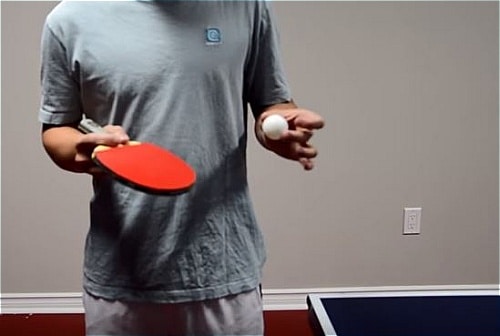
To use the backhand drive, stand facing your opponent with the paddle’s flat end at waist level and parallel to the waist. The paddle should be held so that most of the fingers are facing the body. The paddle should move forward with a slight elbow bend to hit the ball. The ball should be hit with the part of the paddle for backhand. Then turn the wrist so that it closes the racket and forces the ball towards the table. The paddle should move in the same direction as the ball to follow through with the motion, and then you should return to your ready stance.
Push
Pushes are strokes that are used to change the game’s speed and return backspin serves that come in very low and close. It is used as a defensive move and, if done correctly, can send the ball to anywhere on the table that will be hard to attack from.
Pushes are done by, first, putting your serving foot forward and then raising the racket up and slightly back with your elbow near your waist. Swing the racket downwards to contact the ball soon after its bounce and then flick the wrist for extra speed when it reaches the ball. Also, do this with an open racket so that the ball’s bottom part can be grazed and to keep the ball low.
Blocks
Blocks are not even really strokes. They use your opponent’s strength against them by simply placing the racket in front of the ball after its bounce. It is a relatively simple move to save you from shots you have very little time to prepare for.
Do a block against a topspin by tilting the racket’s hitting area downwards and then allowing the force of the ball to send it back. The racket’s angle depends on how much force the opponent put into shooting the ball. Basically, the faster it is coming at you, the more tilted it should be for a controlled return shot.
Smash
Smashes are used to end a play because, if correctly done, it will be shot at the opponent at such a high speed that they won’t be able to return it properly.
Smashes are done against any high balls near the opponent’s side and hit at the bounce’s top. It is similar to a drive except that there is a longer swing, for more momentum, faster, so that the ball will speed towards the other side, with a closed racket to keep the ball within bounds. Try to aim for places your opponent will not reach in time or will not be able to return well. Just because you have managed a successful shot, know that there is the possibility that it can be returned.
Chops
Chops are defensive strokes that use a great deal of backspin to keep the ball going straight and bouncing low. They are hit after the ball has bounced and has begun to fall, and this is anywhere from under the table to a few feet away so that they can force their opponent into making an error.
To do a chop, turn your body to the right for forehands and the left for backhands, and vice versa for left-handers. Bring the racket up and near your head and extend the opposite leg, which means most of your weight should be on foot under the racket. Then swing the racket downwards and forward and hit the ball as it starts dropping. Keep racket open and aim and graze the back bottom part of the ball. Follow through by letting the racket reach its lowest point, which you will know by your straightened arm, and then returning to your ready stance.
Flips
Flips are used to return short balls and can be an alternate for the push. With a strong wrist and a large step forward, they can send the ball back at incredible speeds to surprise the opponent.
To do a flip, you must first take a large step forward with your serving leg, which could mean putting it under the table. Then bend the wrist back, perhaps over the table, and put it under the falling ball after the bounce. When the ball touches the racket, flick it with your wrist and move your arm forward and up to give it a graze. Then move back into your ready stance as fast as you can.
Lobs
Lobs are used defensively, especially against smashes that are far from the table. If done correctly, it will have a lot of topspin and sidespin and send the ball far to the other side of the table.
To hit a lob, first lower the paddle and keep the arm straight. Then lower the shoulder as well and shift most of the weight to the back foot. Bring the paddle upwards and hit the ball as it begins to drop away from the table. Hit it high with an excellent topspin to land on the farther parts of the table. Continue through with the sweeping motion and then return to your ready stance to be prepared for the next move.
Loops
Loops are used to give the ball a lot more spin and for attacking. Since it requires a stronger upward motion with the racket to graze the ball, it will sacrifice moving forward to get many spins.
To start a forehand loop, get ready by moving the leg on the same side as your serving arm a slight step back and turning your upper body and lowering your shoulder along with it so that the racket is slightly behind the back leg. Keep both knees continuously bent but with the back one bent a little more for backspins.
As the ball approaches, bring the racket up and turn your body forward at the same time and then shift most of your weight to the front foot. Graze and hit the ball forward for topspins and upwards for backspins. Continue through with the motion upwards and to the opposite side before returning to your ready stance.
To start a backhand loop, keep knees well bent and bring racket in front of the opposite leg by lowering the shoulders slightly. Bring the back of the racket forward and graze the ball as you hit it. Complete swinging racket to another side of the body and then return to your ready stance.

Warren Davies

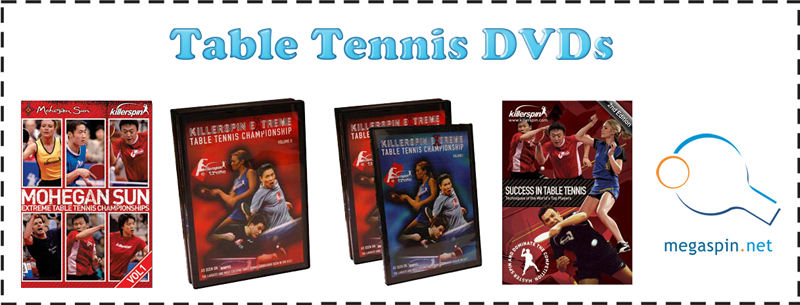
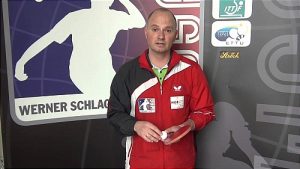
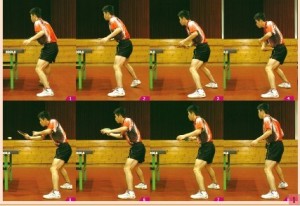
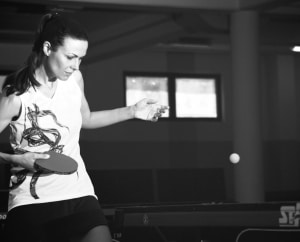
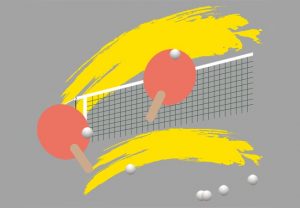
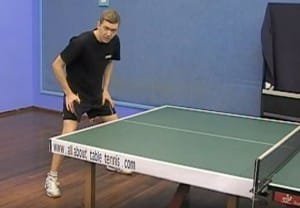
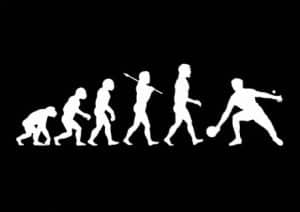
1 thought on “Hitting the Ping Pong Ball in Different Ways”
Today i won 5 games and I won the first place on q8 area. I am so happy and I wish that people know how wonderful this game is. Here in Germany people play table tennis quite often cause we must study it but still there are many ppl don’t know how to play !!!!
Its sooooo true and ppl hate to learn the game once they found it is difficult to master the skill.
I feel real sorry for them coz 4 me I adore this game and I’m an addict to it.
I just hope that ppl wont give up trying coz I’ve been trying to reach this place since 6 years ago.